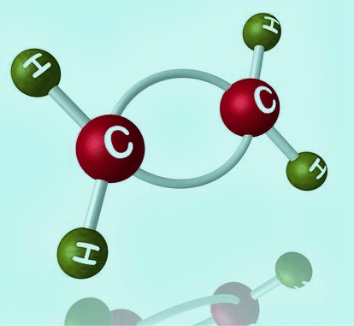Class 12 Exam > Class 12 Questions > what is meant by organometallic compounds Rel...
Start Learning for Free
what is meant by organometallic compounds
? Related: D- block elements
Most Upvoted Answer
what is meant by organometallic compounds Related: D- block elements?
Organometallic Compounds are chemical compounds which contain at least one bond between a metallic element and a carbon atom belonging to an organic molecule. Even metalloid elements such as silicon, tin, and boron are known to form organometallic compounds which are used in some industrial chemical reactions.
The catalysis of reactions wherein the target molecules are polymers or pharmaceuticals can be done with the help of organometallic compounds, resulting in an increase in the rate of the reactions.
Generally, the bond between the metal atom and the carbon belonging to the organic compound is covalent in nature. When metals with relatively high electropositivity (such as sodium and lithium) form these compounds, a carbanionic nature is exhibited by the carbon which is bound to the central metal atom.


An example of an organometallic compound wherein carbons belonging to a benzene molecule bond with chromium is illustrated above. A few more examples of these types of compounds are Grignard reagents, tetracarbonyl nickel, and dimethyl magnesium.

|
Explore Courses for Class 12 exam
|

|
Similar Class 12 Doubts
what is meant by organometallic compounds Related: D- block elements?
Question Description
what is meant by organometallic compounds Related: D- block elements? for Class 12 2025 is part of Class 12 preparation. The Question and answers have been prepared according to the Class 12 exam syllabus. Information about what is meant by organometallic compounds Related: D- block elements? covers all topics & solutions for Class 12 2025 Exam. Find important definitions, questions, meanings, examples, exercises and tests below for what is meant by organometallic compounds Related: D- block elements?.
what is meant by organometallic compounds Related: D- block elements? for Class 12 2025 is part of Class 12 preparation. The Question and answers have been prepared according to the Class 12 exam syllabus. Information about what is meant by organometallic compounds Related: D- block elements? covers all topics & solutions for Class 12 2025 Exam. Find important definitions, questions, meanings, examples, exercises and tests below for what is meant by organometallic compounds Related: D- block elements?.
Solutions for what is meant by organometallic compounds Related: D- block elements? in English & in Hindi are available as part of our courses for Class 12.
Download more important topics, notes, lectures and mock test series for Class 12 Exam by signing up for free.
Here you can find the meaning of what is meant by organometallic compounds Related: D- block elements? defined & explained in the simplest way possible. Besides giving the explanation of
what is meant by organometallic compounds Related: D- block elements?, a detailed solution for what is meant by organometallic compounds Related: D- block elements? has been provided alongside types of what is meant by organometallic compounds Related: D- block elements? theory, EduRev gives you an
ample number of questions to practice what is meant by organometallic compounds Related: D- block elements? tests, examples and also practice Class 12 tests.

|
Explore Courses for Class 12 exam
|

|
Signup for Free!
Signup to see your scores go up within 7 days! Learn & Practice with 1000+ FREE Notes, Videos & Tests.





















